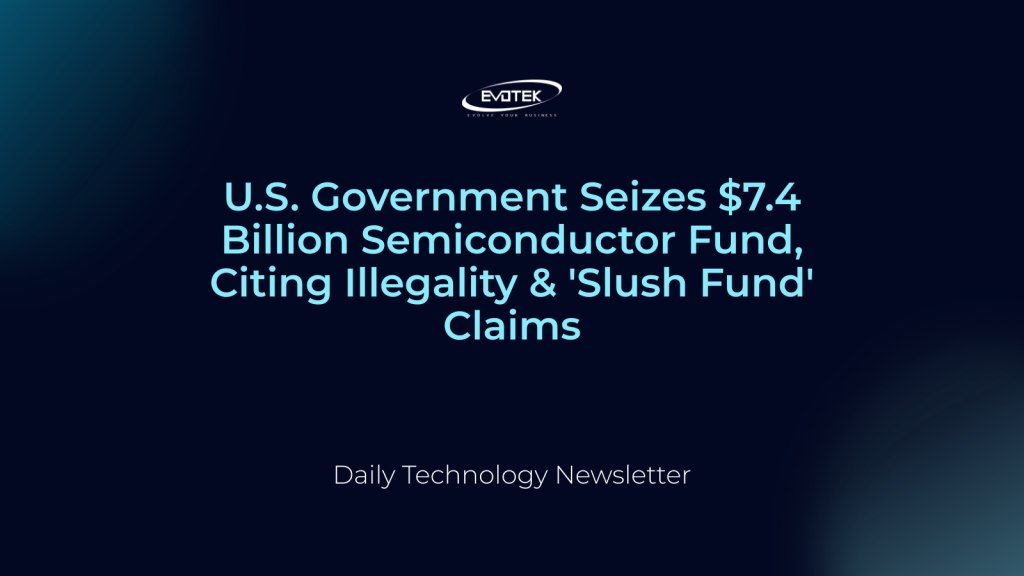The U.S. Commerce Department has taken control of a substantial $7.4 billion semiconductor research fund, a move that has ignited controversy and cast a shadow over future U.S. technology initiatives. The fund, previously managed by the National Center for the Advancement of Semiconductor Technology (NATCAST)—a private non-profit established during the Biden administration—is now under direct government oversight, with officials labeling it “illegal” and a “slush fund.”
This aggressive action by the Commerce Department, first reported by Reuters, marks a significant shift in the administration’s approach to technology investment. While promising enhanced oversight and accountability for these considerable funds, the department has yet to disclose specific plans for their reallocation or future use.
The CHIPS Act and NATCAST’s Origins
NATCAST was an integral component of the Biden administration’s landmark CHIPS and Science Act. This ambitious legislation authorized nearly $300 billion in investments aimed at bolstering the United States’ leadership in the design, development, and manufacturing of cutting-edge semiconductors. NATCAST was allocated $11 billion from this act, earmarked for establishing a network of research centers dedicated to advancing chip design and production domestically.
However, the Commerce Department, with its new leadership signaling a shift in policy direction, is now asserting its authority over NATCAST. It has announced plans to take over a significant portion of the organization’s funds moving forward.
Allegations of Illegality and Misconduct
Commerce Secretary Howard Lutnick has been particularly vocal in his criticism of NATCAST. In a public statement, Lutnick asserted, “From the very beginning NATCAST served as a semiconductor slush fund that did nothing but line the pockets of Biden loyalists with American tax dollars.” This strong condemnation aligns with a broader push by Lutnick to fundamentally alter how the U.S. manages its critical technology investments and grants.
The Commerce Department’s statement further characterized NATCAST as an “effort to skirt clear legal restrictions prohibiting government agencies from establishing corporations.” It also highlighted the presence of “former Biden officials” within the organization, implying instances of nepotism and corruption without providing explicit details.
Uncertain Future for Key Semiconductor Projects
Despite these serious allegations, NATCAST had previously emphasized its critical role in enhancing U.S. competitiveness in the advanced chip industry and its alignment with White House priorities. Just last week, it celebrated the inauguration of its new CHIPS for America Extreme Ultraviolet (EUV) Accelerator facility within the NY Creates Albany NanoTech Complex. This state-of-the-art facility was designed to accelerate the U.S.’s capacity for fabricating the latest EUV semiconductors, offering unparalleled access to ASML’s advanced EUV chip design tools and aiming to attract top talent.
The future of this cutting-edge accelerator, along with other NATCAST initiatives, now hangs in the balance. Another significant project, a planned research and development facility in Tempe, Arizona, announced in January and slated for a 2028 opening, appears increasingly unlikely to proceed without the necessary financial backing.
As the Commerce Department maintains its control over the billions in funding, the semiconductor industry and technology sectors eagerly await clarification on how these vital resources will be managed to maintain and advance America’s position in global chip innovation.

 日本語
日本語 한국어
한국어 Tiếng Việt
Tiếng Việt 简体中文
简体中文